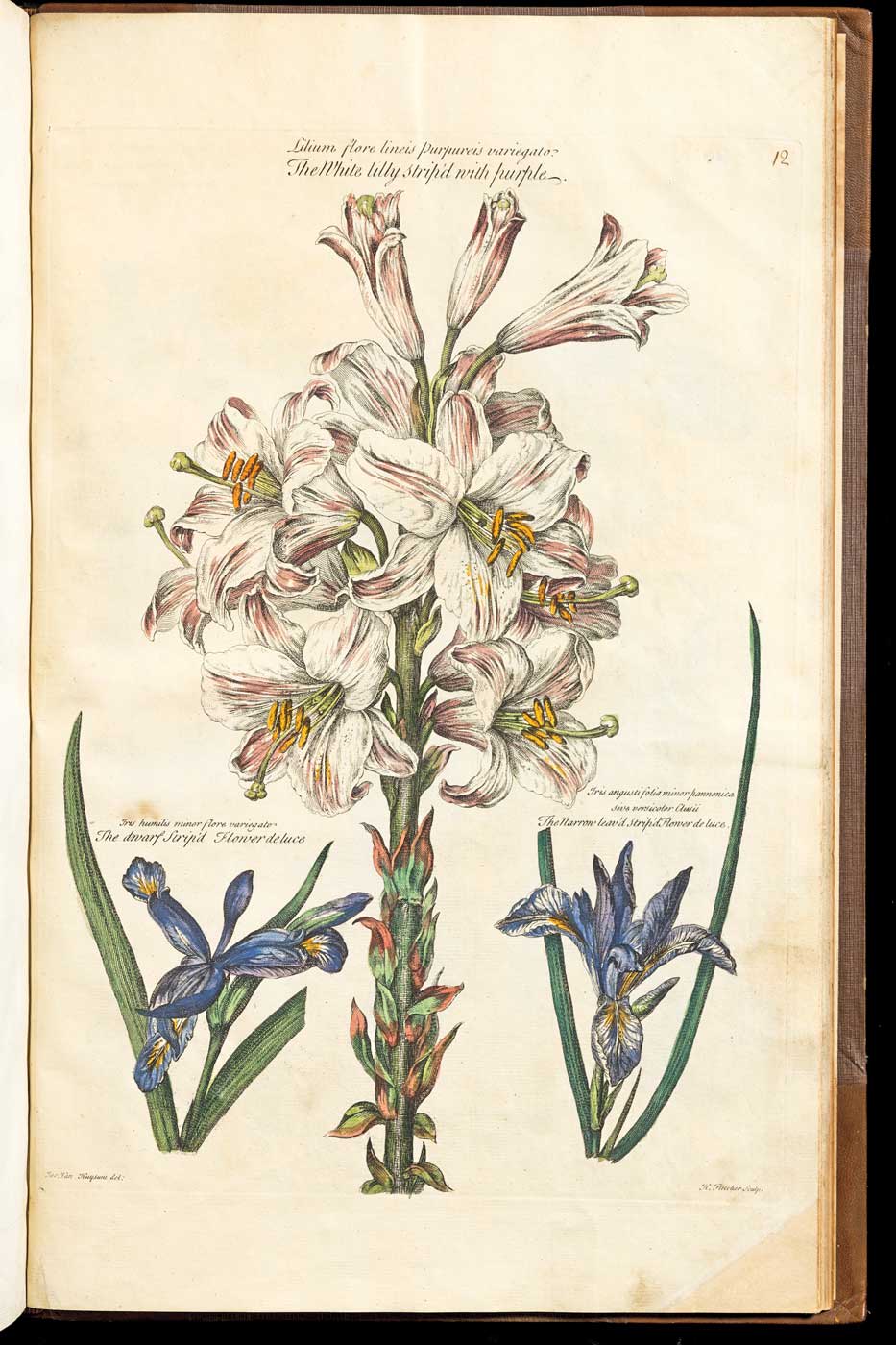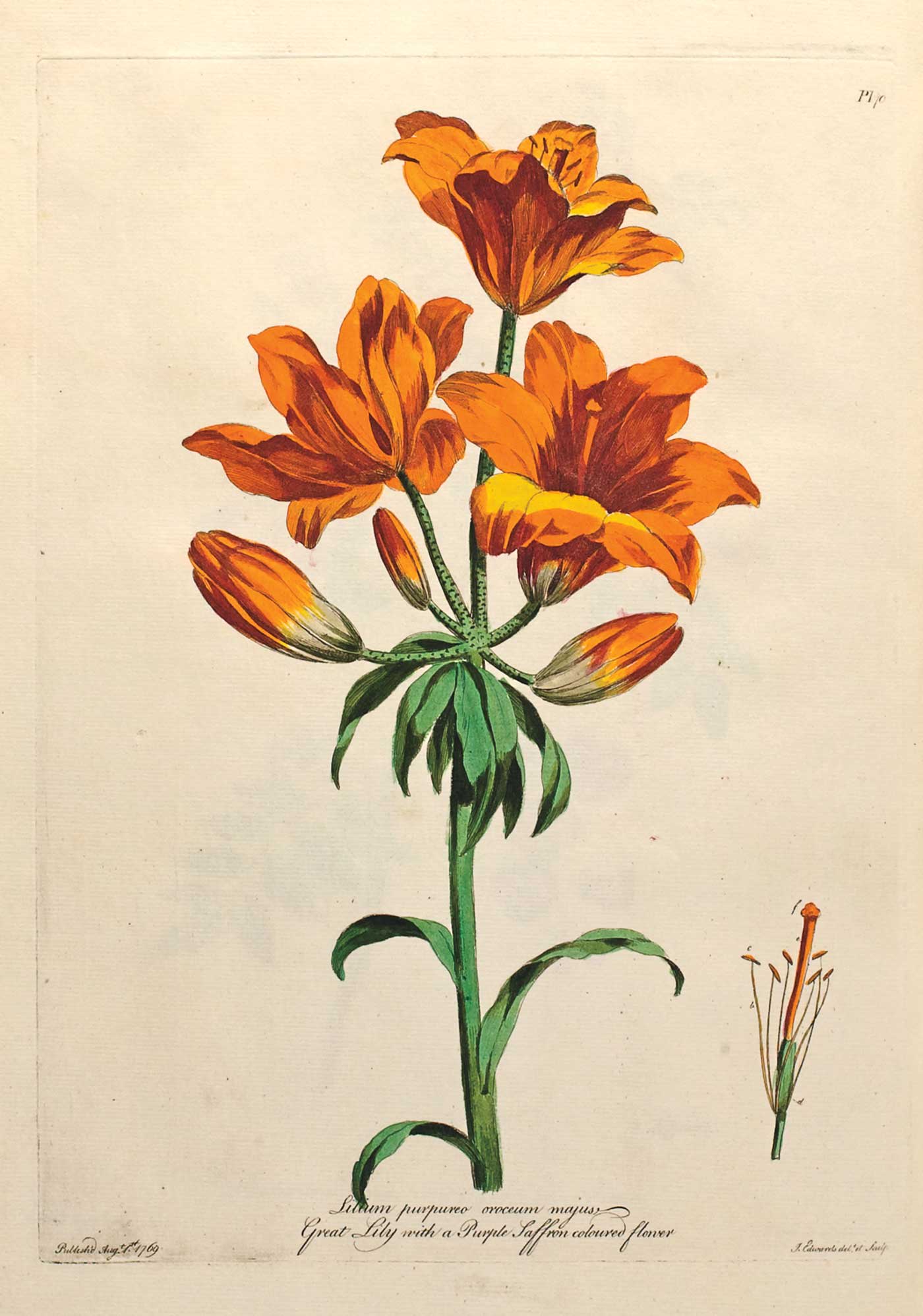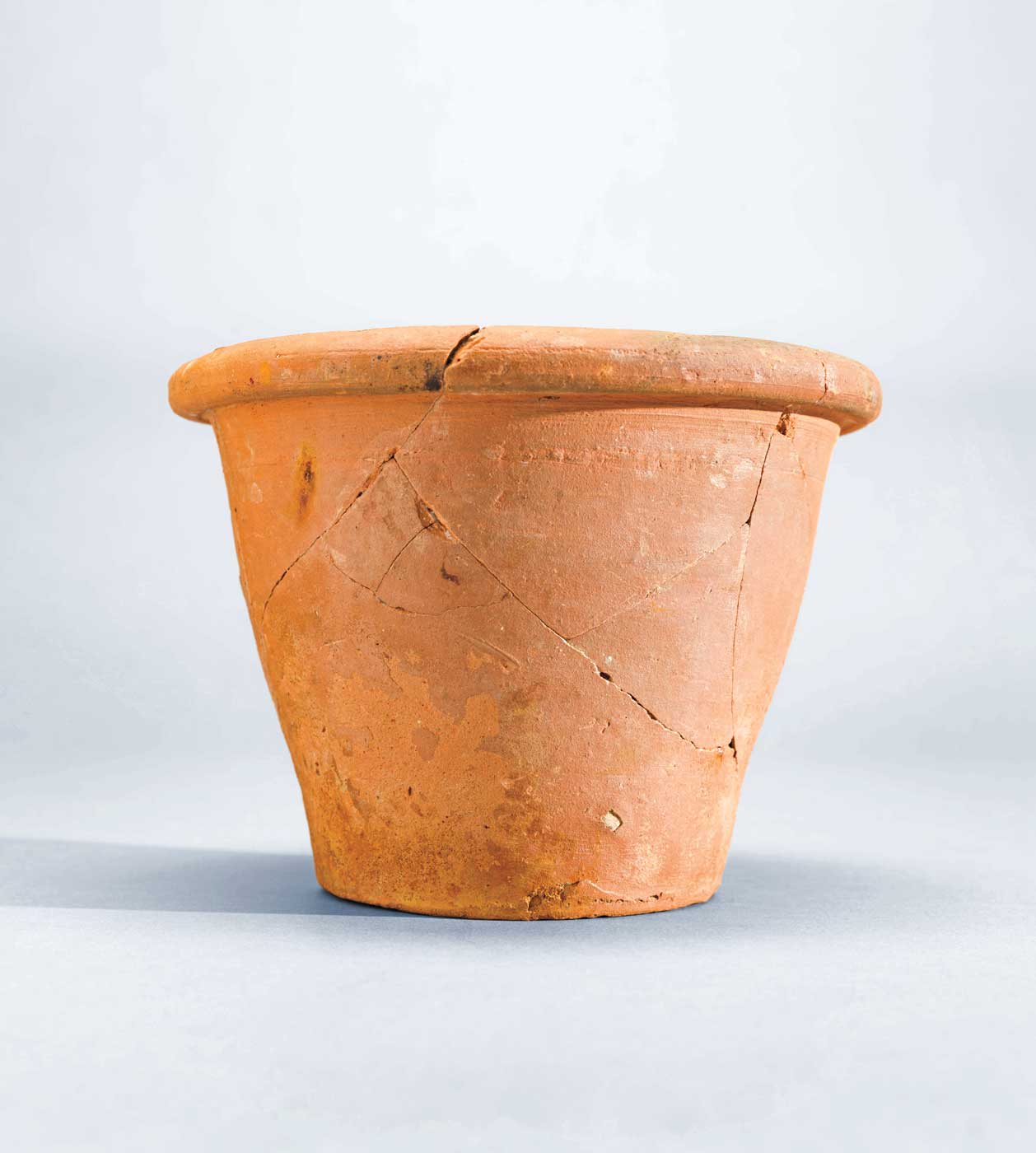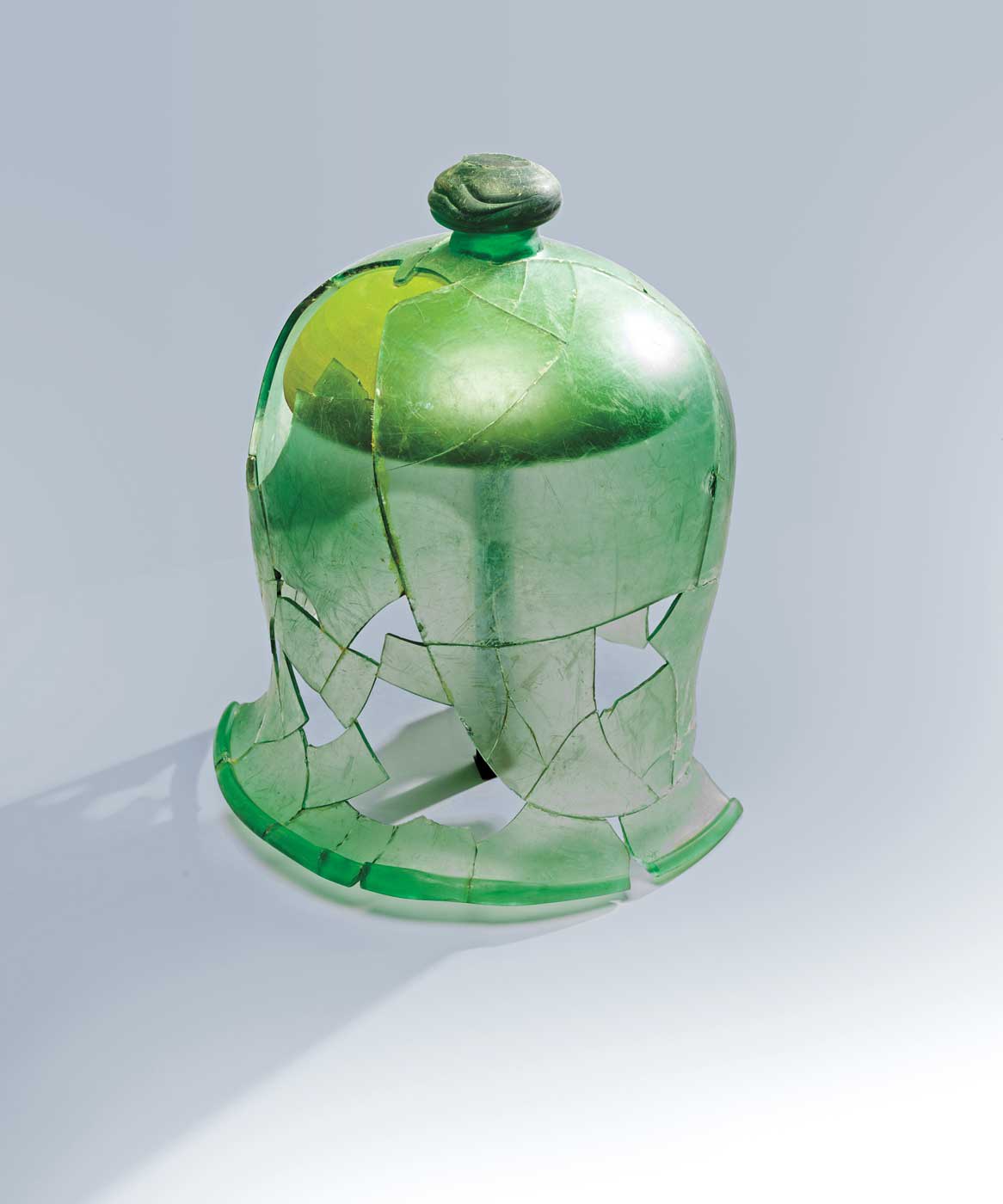
IRON RAKE
18TH CENTURY
This rake was found at the James Geddy foundry and could have been made at the workshop. Anthony, an enslaved gardener working at Custis Square, likely used a tool like this to maintain wide gravel walks and keep rows of boxwood edging weed-free.

WHITE LILY
LONDON, 1730
John Custis’ 12-year correspondence with London botanist Peter Collinson reveals a preference for variegated plants, whose flowers or leaves display more than one color.

GREAT LILY
LONDON, 1770
The use of vivid colors was another signature of a John Custis garden.

EARTHENWARE FLOWERPOT
CIRCA 1780s
In the early 18th century, linear arrangements of flowerpots were fashionable in ornamental gardens. A thick rolled rim on a pot like this one found in Custis Square made it easier to grab and move around in the garden.

ROSE
LONDON, 1770
Roses were part of John Custis’ garden plan and he received cultivars from England, where the blooming bush was often found in formal plantings.

PEACH PITS
CIRCA 1780s
These peach pits, found in the well at Custis Square, likely came from John Custis’ orchards, where he grew apples, cherries, plums, almonds, and pistachios, in addition to peaches. The well’s dark and wet environment helped preserve these usually perishable organic objects.

BELL GLASS
LATE 18TH CENTURY
Gardeners used bell glasses to force plants to bloom or speed up their growth. John Custis tried without success to use them to germinate cucumber and watermelon seeds. No bell glasses have been found at Custis Square. This one came from an excavation that revealed evidence of the Chiswell-Hubard House, which burned in 1797.